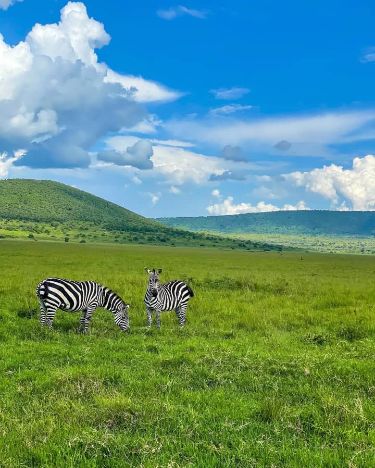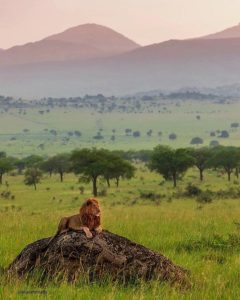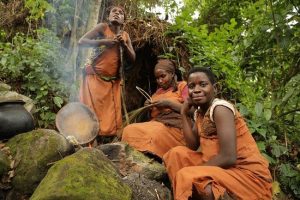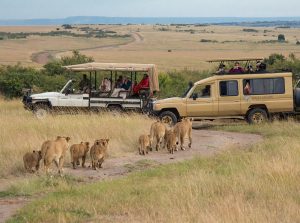Best time for a year safari in Uganda
Safari experiences include a variety of activities such as game driveboat safaris, gorilla trekking, chimpanzee tracking, and cultural excursions that take place throughout the year to experience different seasons and wildlife behaviours. It includes full-year exploration, unlike a typical short safari. A year safari involves spending a significant amount of time in the country, allowing for deeper immersion into its natural wonders. Best time for a year safari in Uganda
Seasonal variations
The year-long experience allows for witnessing Uganda’s landscape and wildlife during different seasons, such as the dry season, from June to August to September, with abundant sunshine, and the rainy season, from December to September, to November, with lush greenery and unique birdlife.
Diverse activities
It includes a variety of safari activities such as game drives in national parks like Queen Elizabeth National Park and Murchison Falls National Parkboat safaris on the Nile River or Kazinga channel, and trekking through rainforests for gorillas and chimpanzees in Bwindi Impenetrable National Park and Kibale National Park.
Cultural immersion
Beyond wildlife, a year safari can involve engaging with local communities, learning about culture,,s and experiencing traditional Ugandan li.fe.
Reasons for choosing a year safari
In-depth experience
A year allows for a much more comprehensive and intimate understanding of Uganda’s ecosystems and wildlife than a shorter trip.
Photography and videography
The extended time frame provides ample opportunities for capturing stunning images and videos of Uganda’s beauty..
Unique encounterInth a year, u can witness seasonal events like the great migration of animals or the breeding season of various bird species.
Personal growth
A year-long journey can be a transformative experiencefostering a deeper appreciation for nature and different cultures.
What are the best times to go on a safari in Uganda?
The best time for a safari in Uganda is during the dry seasons, which are June to August and December to February. These periods offer pleasant weather for most activities, including gorilla, chimp trekking, mountain climbing, and game viewing.
Dry season from June to August and from December to February)
Characterized by sunny days and minimal rainfall, making it ideal for wildlife viewing as animals gather around water sources, and visibility is improved
The wet season is from March to May, September to November
While the scenery is lush and green and prices may be lower, infall can make trails muddy and slippery, and visibility may be reduced..
Gorilla trekking
The dry season is particularly popular for gorilla trekking as the trails are less muddy and challenging.
Chimpanzee tracking
Similarly, chimpanzee tracking is also best during the dry season for easier navigation in the forest.
How many days is a safari?
A typical safari can last anywhere from a few days to two weeks or more, depending on your preferences and budget. A short safari, like a 3to4 4-day trip, might focus on a single location. For a more immersive experience, a 7- to 10-day safari allows for exploring multiple parks and potentially different regions or even countries. Longer safaris or more are ideal for in-depth exploration and can include a variety of activities and destinations.
Short safaris, 3 to 4 days
These are good for a quick introduction to a specific area, like a national park, and are often budget-friendly
Standard safaris
This duration is often recommended for a good balance of wildlife viewing, diverse landscapes, and comfortable travel between locations.s
Extended safaris 10to 14 days or more
These offer the opportunity to delve deeper into multiple parts, potentially combining different ecosystems or even countries.
Factors to be considered when deciding on a safari length
Budget
Longer safaris tend to be more expensive due to increased accommodation, transportation, and activity costs.s
Interests
If you’re interested in specific wildlife,l ike the great migration, or activities like gorilla trekking, you may need a longer itinerary.
Travel time
Factor in travel time between locations, especially if you’re covering larger distances
Travel companions
Consider the needs of your travel companions, especially if you have children or those with mobility challenges.
Desired experience
Decide whether you want a fast–paced trip or a more relaxed, immersive trip.
How much does it cost to go on a safari in Uganda?
A safari in Uganda can range from budget-friendly camping options to luxurious lodge stays, with prices varying significantly. Generally expect to pay between $300and $1000 per person, depending on the level of comfort and inclusions.
Accommodation budget-friendly options like camping or basic lodges can be as low as $100 per night, while luxury lodges can range from $300 to $5000 per night.t
Permits
Gorilla trekking permits in Uganda are $800 per person. Chimpanzee tracking permits are around $200, according to Murchison Falls National Park.
Transportation
Hiring a car and a driver can cost $100 to $200 per day, with variations based on vehicle type and whether fuel is included.d
Season
High season is June to SeSeptemberand December to February have higher prices due to increased demand.
What is the original meaning of a safari?
The word safari originally means journey or travel in Swahili, which itself is derived from the Arabic word (safar ), while now commonly associated with wildlife viewing in East Africa, its earliest use referred to any long overland journey, often for trade or exploration.
Arabic roots
The word safari traces back to the Arabic word( safar), which means journey or travel.
Swahili adoption
The Swahili people who live along the East African coast adopted the word safari with the same meaning, journey or travel.
Evolution to wildlife viewing
Over time, particularly with the rise of European exploration and colonization, the term safari became more closely associated with hunting expectations and wildlife viewing in Africa.
Expectations on a safari in Uganda
Uganda offers a diverse range of wildlifeencounterss including the big five, for example, lion, leopard, elephant, and buffalo. Primates like gorillas, chimpanzees, and unique species like tree-climbing lions. Expect to see animals in their natural habitat, requiring some patience and luck, with expert guides playing a key role in maximizing sightings.




